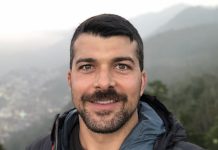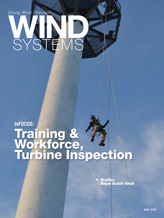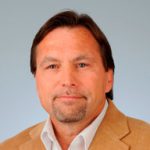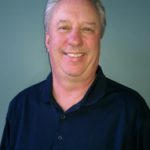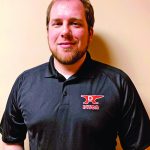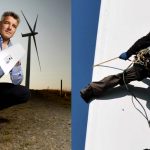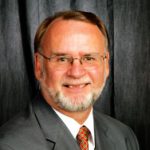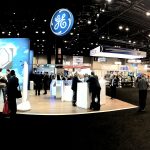Tell us a little about Bruenning’s Breeze Wind Farm?
First thing, I want to touch base on how the farm was named. It was actually named after Michelle Bruenning, and she worked in our legal department in Austin. She passed away a couple years ago from cancer, and this farm was named in dedication to her and the work she did for the company. We recently had a dedication ceremony in April that included her family coming down.
Legally, the farm was called Magic Valley 2, but then we changed the name. But we are comprised of 76 Acciona 3 MW turbines. So, we’re 228 MW total. We have just one substation, operations building. And we tie into the local AP-345 line. And we actually went COD (commercial operation date) in December of last year.
What are your duties at Bruenning’s Breeze?
I am the site operations supervisor. I oversee all operations onsite. This is, of course, a first for e.on. This is a first site for e.on that was self-performed from day one. So, e.on has taken control of the site. We have just a parts warranty with the manufacturer. We actually have a group of e.on technicians on site taking care of daily operations, taking care of the maintenance repair, and everything. Not only that, but we also take care of the BOP side. We take care of the substation; we take care of the road, yard, building, 100 percent all the way across.
Is that a unique situation for e.on?
On the ownership side, I know that FP&L (Florida Power & Light) has been doing this for years, and a couple of others have taken over first day, but not many. So, I think this is what we’re going to be looking at pretty much moving forward with all our projects. It’s just, from a cost standpoint, a lot better.
But my duties onsite are that I run the show. I take care of everything from contract management to negotiations on vendor contracts and turbine performance, safety. Everything is under my scope.
What’s a typical day like at Bruenning’s Breeze?
We have our scheduled work that we always have to do. Every day starts with a nice morning meeting with everyone on site. We have a daily safety brief every single day. And we’re a little unique — we started this at my last wind farm — at every wind farm, they’ll do a stretch-and-bend in the morning. But we actually go for a walk first every morning. We walk around the yard and get a little warmed up, and then we actually do our bend-and-stretch after our morning meeting.
 We essentially have a lead technician who looks at SCADA and sees what’s down for the day. Normally, we know the day before as to what we’re going to be doing as far as scheduled work is concerned. And then, of course, we have teams that are designated for unscheduled work during the day as well. And it’s a wind farm, so you deal with anything else that arises. And that could be anything from a different turbine faulting that wasn’t down or addressing some major fault issue. There are a lot of different things that could make it on that list. And there are several things that as a manager that I have to monitor. We have safety steering committees. We have building walkthroughs. We go out and do observations onsite. We do QA/QC work on our own people internally, so it depends on what the day holds.
We essentially have a lead technician who looks at SCADA and sees what’s down for the day. Normally, we know the day before as to what we’re going to be doing as far as scheduled work is concerned. And then, of course, we have teams that are designated for unscheduled work during the day as well. And it’s a wind farm, so you deal with anything else that arises. And that could be anything from a different turbine faulting that wasn’t down or addressing some major fault issue. There are a lot of different things that could make it on that list. And there are several things that as a manager that I have to monitor. We have safety steering committees. We have building walkthroughs. We go out and do observations onsite. We do QA/QC work on our own people internally, so it depends on what the day holds.
Is there anything about Bruenning that makes it unique among wind farms of its size?
If anything, it’s the fact that we were self-performed from day one as the owners. That is definitely unique to us, in that this is the first site within e.on. And I believe this is the first site where Acciona has ever sold turbines where the farm has been self-performed. So, there have been some growing pains and learning curves, but we’re managing.
How does Bruenning’s inspect its turbines?
We have scheduled maintenance for one. Right now, of course, we’re a brand-new wind farm. We actually are just finishing up our three-month maintenance cycle, which is known as your break-in maintenance cycle. And we’re going to be rolling right into our six-month inspect. And that’s normally a bi-annual event. For most turbine manufacturers, it’s every six months. And depending what year you’re in will determine what type of task. You may do more on one maintenance than the other. But you can almost guarantee that every turbine will be inspected bi-annually or every six months.
Some of the other things that we do, though, is we try to capture fault data. We Pareto check our faults as far as production losses — which turbine faults are giving us the most issues, how many are we seeing the most of, and which ones are causing the most down time. And we run those checks at least on a weekly basis. So, we know the status and if we have any sick turbines out there. We also have a condition monitoring system on our bearings. We also monitor vibrations throughout the towers. And that data will throw out, maybe every three weeks, some turbines that need to be looked at based on those conditions that we’re seeing as well.
Other than that, every day we look at SCADA, and if you see a turbine down, then you go address it. And we have a 24-hour monitoring center in Austin in our operations headquarters for e.on.
What strategic placement advantages contributed to the Bruenning Breeze project?
We are a coastal wind farm. There’s a lot of activity on the coast of Texas. And one of the reasons for that is that they’ve noticed that our wind regime on the coast actually follows the power demand. In the afternoon is when we have our highest winds, and that’s also when we have the highest load on the grid. It’s a win-win for us, because we’re supplying more power when there is peak pricing and when there is more load on the grid. And it’s kind of specific to this area. The coastal winds come up every afternoon just like clockwork.
That’s why you’re seeing a lot of growth down here. But not only that, but in the valley, the Rio Grande Valley, there are only two conventional power plants. And the Rio Grande Valley is one of the fastest growing metropolitan areas in the U.S. So, every day, there are new businesses. Every day, there are new homes. That means the power consumption becomes higher and higher and higher, but they’re not building any more conventional plants. As power consumption grows in the valley, wind power is helping with those consumption needs.
What’s next for the Magic Valley Wind Farm?
We have had a great working relationship with counties here in the valley, and we’ve really enjoyed being part of the community here, and we are exploring more mutually beneficial projects in the area for the future.
For more information, go to www.eon.com

















